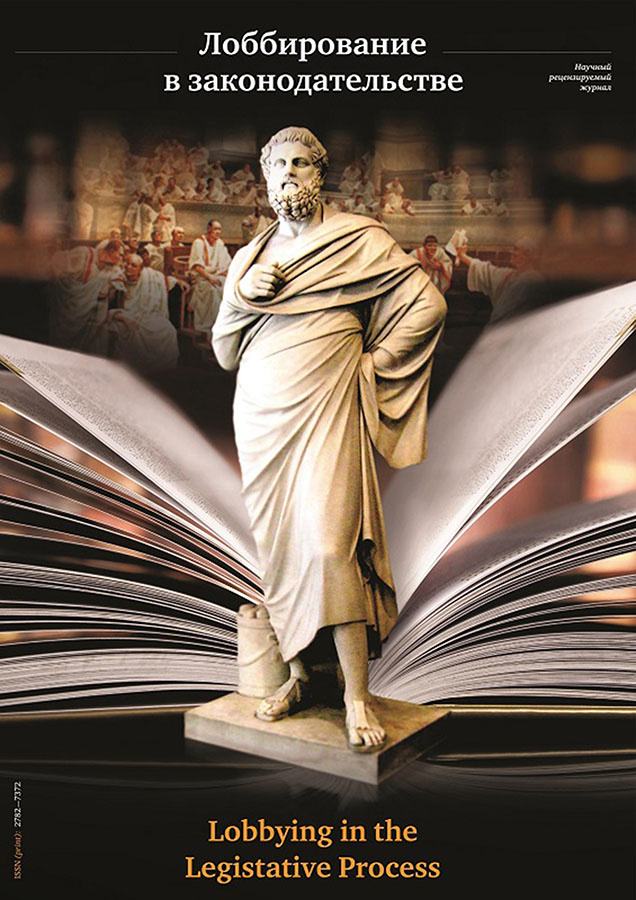Online grooming of minors in the criminal legislation of the Republic of Armenia and foreign countries: the downside of digitalization processes
- Authors: Sargsyan A.A.1
-
Affiliations:
- Russian-Armenian (Slavic) University
- Issue: Vol 4, No 3 (2025)
- Pages: 109-116
- Section: Lobbying issues in the legislation of the Republic of Armenia
- URL: https://journals.eco-vector.com/2782-7372/article/view/695424
- DOI: https://doi.org/10.33693/2782-7372-2025-4-3-109-116
- EDN: https://elibrary.ru/AHLIVB
- ID: 695424
Cite item
Abstract
The purpose of the research. The protection of the sexual integrity of minors is the most important task of criminal legislation, which should be continuous, since the earlier onset of sexual activity of the latter is a direct threat to their moral, mental and physical development. Unfortunately, there is currently an increase in the number of attacks on the sexual integrity of minors, which is becoming most favorable, in particular, in the context of their commission in the digital space, which also increases their latency. Online grooming of minors, which once seemed far away and impossible, is a reality of today, a negative, socially dangerous phenomenon that requires an adequate response from the state. For the first time, criminal liability for grooming is provided for in the new Criminal Code of the Republic of Armenia dated 05.05.2021 (entered into force on 07.01.2022). At the same time, this norm presents significant difficulties in law enforcement practice in connection with establishing the content of the objective side, as well as proving the subjective side of the crime under investigation. Conclusions. As a result of the conducted research, the author comes to the conclusion that it is necessary to review the grooming sanction, believing that the current approach of the Armenian legislator is excessively liberal and does not fully allow achieving proportionality between the degree of public danger of the act and its punishability. At the same time, in order to facilitate the task of the law enforcement officer and ensure uniformity of law enforcement practice, it is proposed to specify the range of acts that form the objective side of the analyzed corpus delicti.
Keywords
Full Text
About the authors
Adelina A. Sargsyan
Russian-Armenian (Slavic) University
Author for correspondence.
Email: adelina-sargsyan@mail.ru
ORCID iD: 0000-0002-2874-9676
SPIN-code: 5620-7821
Cand. Sci. (Law); lecturer, Department of Criminal Law and Criminal Procedure Law, Institute of Law
Armenia, YerevanReferences
- Artyushina O.V. Violent crime and IT technologies. Lex russica (Russian Law). 2019. No. 1 (9). Pp. 77–84. (In Rus.)
- Bimbinov A.A. Non-violent attacks on the sexual integrity of minors under the criminal law of foreign countries. Bulletin of the University named after O.E. Kutafina. 2015. No. 7. Pp. 147–161. (In Rus.)
- Karpenko D.D. Problems of criminalization of “online grooming” in the Belarus Republic. Issues of Criminology, Forensics and Forensic Examination. 2022. No. 2 (52). Pp. 155–158. (In Rus.)
- Mazur A.A. Socio-criminological study of Internet grooming. Bulletin of the Russian University of Cooperation. 2020. No. 1 (39). Pp. 142–146. (In Rus.)
- Medvedeva A.S., Dozortseva E.G. Characterization of online grooming as a type of sexual exploitation of minors (based on the results of the analysis of correspondence of adults and children on the Internet). Electronic Journal “Psychology and Law”. 2019. Vol. 9. No. 4. Pp. 161–173. (In Rus.)
- Tretyakov I.L. Criminal pedophilia in cyberspace: issues of counteraction. Legal Science: History and Modernity 2021. No. 4. P. 89. (In Rus.)
- McAlinden A.M. “Setting ‘em up”: Personal, familial and institutional grooming in the sexual abuse of children. Social and Legal Studies. 2006. Vol. 15. Pp. 339–362.
- Kloess J.A., Hamilton-Giachritsis C.E., Beech A.R. Offense processes of online sexual grooming and abuse of children via Internet communication platforms. Sexual Abuse. 2017. Vol. 311. Pp. 73–96
- Craven S., Brown S., Gilchrist E. Sexual grooming of children: Review of literature and theoretical considerations. Journal of Sexual Aggression. 2006. No. 12 (3). Рp. 287–299.
- Negredo L., Herrero Ó. Child pornography on the internet. Papeles del Psicólogo (Psychologist Papers). 2016. Vol. 37 (3). Pp. 218. URL: https://www.researchgate.net/publication
Supplementary files









